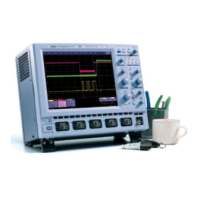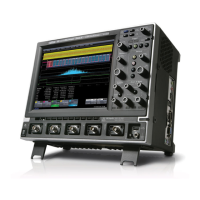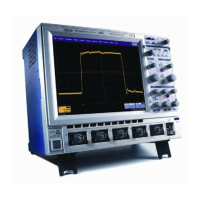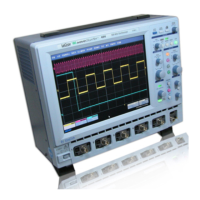236 WM-OM-E Rev I
Coherent Gain The normalized coherent gain of a filter corresponding to each window function is
1.0 (0 dB) for a rectangular window and less than 1.0 for other windows. It defines the loss of signal
energy due to the multiplication by the window function. This loss is compensated for in the
oscilloscope. The following table lists the values for the implemented windows.
Window Frequency Domain Parameters
Window Type Highest Side
Lobe
(dB)
Scallop Loss
(dB)
ENBW
(bins)
Coherent Gain
(dB)
Rectangular
-13 3.92 1.0 0.0
Hanning (Von
Hann)
-32 1.42 1.5 - 6.02
Hamming
-43 1.78 1.37 -5.35
Flattop
-44 0.01 2.96 -11.05
Blackman-Har
ris
-67 1.13 1.71 -7.53
ENBW Equivalent Noise BandWidth (ENBW) is the bandwidth of a rectangular filter (same gain at
the center frequency), equivalent to a filter associated with each frequency bin, which would collect
the same power from a white noise signal. In the table on the previous page, the ENBW is listed for
each window function implemented, given in bins.
Filters Computing an N-point FFT is equivalent to passing the time-domain input signal through
N/2 filters and plotting their outputs against the frequency. The spacing of filters is Delta f = 1/T,
while the bandwidth depends on the window function used (see Frequency Bins).
Frequency Bins The FFT algorithm takes a discrete source waveform, defined over N points, and
computes N complex Fourier coefficients, which are interpreted as harmonic components of the
input signal.
For a real source waveform (imaginary part equals 0), there are only N/2 independent harmonic
components.
An FFT corresponds to analyzing the input signal with a bank of N/2 filters, all having the same
shape and width, and centered at N/2 discrete frequencies. Each filter collects the signal energy
that falls into the immediate neighborhood of its center frequency. Thus it can be said that there are
N/2 "frequency bins."
The distance in hertz between the center frequencies of two neighboring bins is always:
Delta f = 1/T
where T is the duration of the time-domain record in seconds.
The width of the main lobe of the filter centered at each bin depends on the window function used.
The rectangular window has a nominal width at 1.0 bin. Other windows have wider main lobes (see
table).
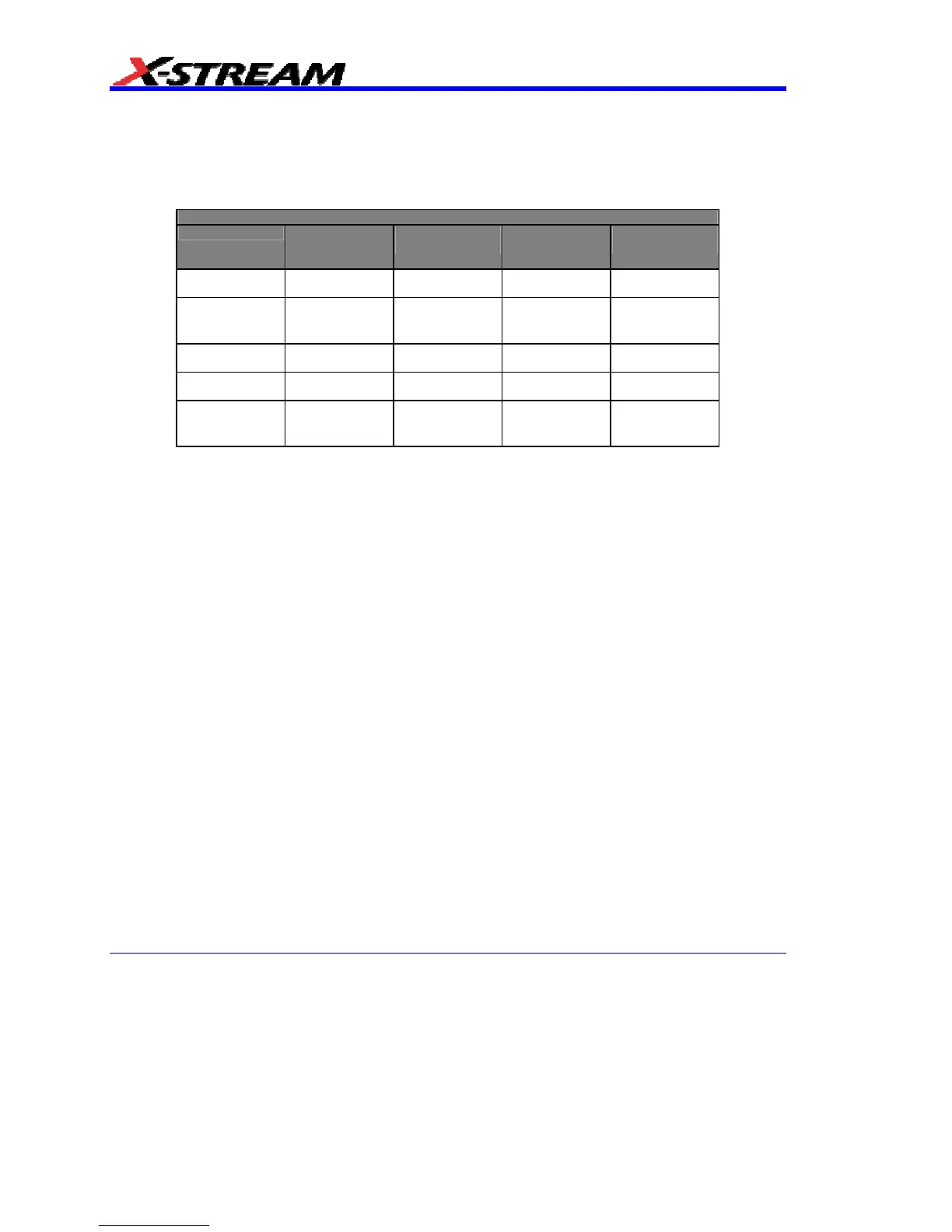